New magazines: "It's gloriously single-minded"
As part of our series on new print magazines bucking the trend for online design journalism, Dezeen spoke to Laura Houseley, editor of Modern Design Review, about the advantages of a slower pace of publishing and focusing on a single aspect of the design industry (+ interview + slideshow).
Modern Design Review is a biannual publication edited by Laura Houseley, former design editor at Wallpaper magazine and a journalist with over 15 years experience, and designed by London studio Graphic Thought Facility.
Houseley founded the magazine after working for fashion titles Arena Homme + and Pop and being "constantly surprised and delighted" by the way they reinterpreted the work of designers.
"The way they would interpret a story is incredibly creative and I think that hasn't happened in design journalism," she explained. "The idea that you can be more creative, you can try and interpret some of these wonderfully creative products and people and brands and things, was interesting to me."
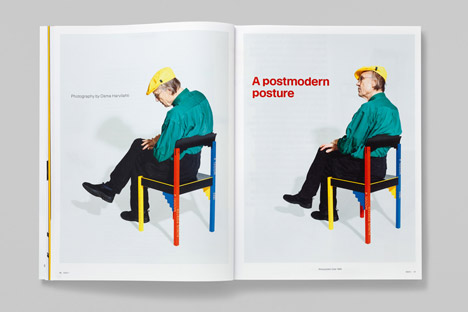
"For a long time covering design has been quite a straightforward area of journalism and I think there's plenty of scope to match the creativity of the industry itself in the reporting of it," said Houseley.
Modern Design Review is one of a number of new print publications launched in the UK this year, despite the ever-growing dominance of websites covering design news and new product launches.
Among them are two other biannual publications: Dirty Furniture – co-founded by former Icon design editor Anna Bates – which focuses on criticism of household objects, and the design-fair oriented Fiera, co-founded by design blogger Katie Treggiden.
But Houseley believes there is still room for more niche publications.
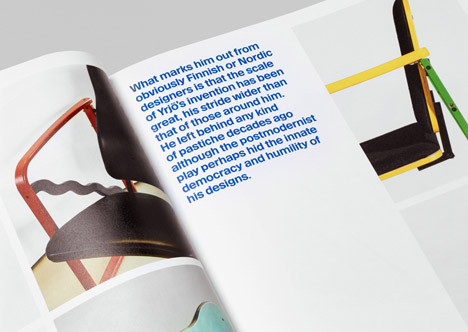
"As the design industry grows, in size and influence, so the opportunities to cover it in different ways open up. There is plenty of space for design magazines with different agendas," she said.
"Modern Design Review will cover whatever we feel is interesting and relevant without being encumbered by the baggage of having to include a multitude of subject matters. It's gloriously single-minded but it makes for original and thoughtful content."
The magazine, which published its first issue earlier this year with issue two due out in October, focuses almost entirely on product and furniture design.
"Design is a huge and wide-ranging topic at the moment but I'm certainly not trying to cover all of those things," said Houseley. "The idea is to pick up on themes, trends and feelings that are around at the moment and riff on them, rather than slavishly follow news stories."
"The very extent of what design is means that it is possible to concentrate on one aspect of it and still have a huge amount to communicate," she added. "Being niche gives the magazine focus, it allows us to savour our subject matter."
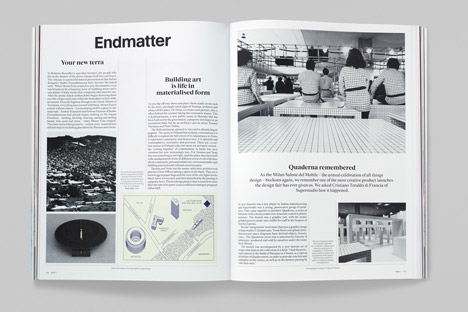
Designers are becoming more savvy in the way they present their work, with a number becoming their own publishers through blogs and bespoke publications. But magazines still have a curatorial role, according to Houseley.
She said the magazine would tap into the creativity of designers by inviting them to become contributors and would make design more accessible through its "bookish" approach, with footnotes and margin notes.
"We're interested in working with photographers that don't normally shoot design and people who don't perhaps normally write about design. We're also interested in bringing in some of the designers themselves who are very creative," said Houseley.
"Designers work on so many different levels it's very rarely just about making product. They communicate, they are communicators, that's part of what they do, so I hope there's a happy union between design journalists and designers."
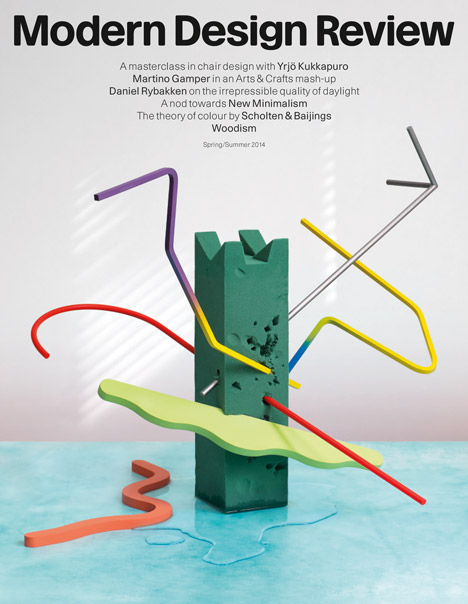
Read the edited transcript from our interview with Laura Houseley:
Marcus Fairs: So first of all, tell us who you are.
Laura Houseley: My name is Laura Houseley, previously a design editor at Wallpaper magazine and then a freelance design editor working for people like Arena Homme+ and Pop and a design consultant too, working for people like Established & Sons and Tom Dixon, Another Country and J Hill Standard recently.
Marcus Fairs: And you've launched this new print magazine. Tell us what it's called and what the whole philosophy behind it is.
Laura Houseley: It's called Modern Design Review, it's biannual. I'm doing it with Graphic Thought Facility. The idea behind it is just to do a really beautiful paperly designed publication, which has been a long held ambition and I think the time is right to do it now.
Marcus Fairs: In the last few years, design journalism has shifted from print to the internet but there seems to be a move back the other way now. There's a lot of new design titles. Why do you think that is?
Laura Houseley: I think there's an interest in beautiful magazines in all creative sectors. Design itself is such a vast discipline and it's such a wonderfully creative place to be at the moment – there's room for new magazines and new ways of covering design as well. For a long time covering design has been quite a straightforward area of journalism and I think there's plenty of scope to match the creativity of the industry itself in the reporting of it.
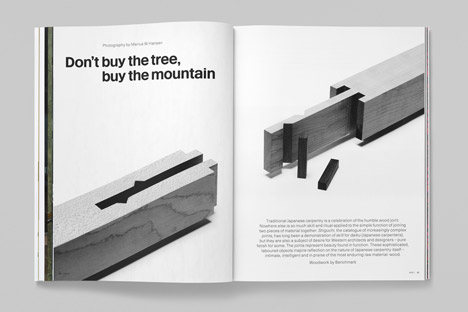
Marcus Fairs: So how are you doing that in your magazine? What's different about it?
Laura Houseley: The idea is to pick up on themes, trends and feelings that are around at the moment and riff on them, rather than slavishly follow news stories. I want the magazine to be a beautiful object in its own right as well. It's a tightly edited thing and we luxuriate in the content quite a lot, so there's some beautiful photography and there are some loose threads that go throughout the magazine as well.
Marcus Fairs: It's a design magazine, but what is design to you? What does it encompass?
Laura Houseley: We are particularly interested in product and furniture design. I'm quite clear that that is our interest area. The mandate doesn't really cover architecture, or interior design or lifestyle, which I think a lot of other design magazines do. Design is a huge and wide-ranging topic at the moment but I'm certainly not trying to cover all of those things. Design means something a lot more all-encompassing today than it did ten years ago.
Marcus Fairs: In what way?
Laura Houseley: What we understand "design" to be has broadened significantly, although a lot of that, I think, is about perception and awareness – "design thinking" and "service design" for example have always been around; although the people carrying out those tasks just might not have been called designers. The very extent of what design is means that it is possible to concentrate on one aspect of it and still have a huge amount to communicate. Being niche gives the magazine focus, it allows us to savour our subject matter.
Modern Design Review will cover whatever we feel is interesting and relevant without being encumbered by the baggage of having to include a multitude of subject matters. It's gloriously single-minded but it makes for original and thoughtful content. As the design industry grows, in size and influence, so the opportunities to cover it in different ways open up. There is plenty of space for design magazines with different agendas.
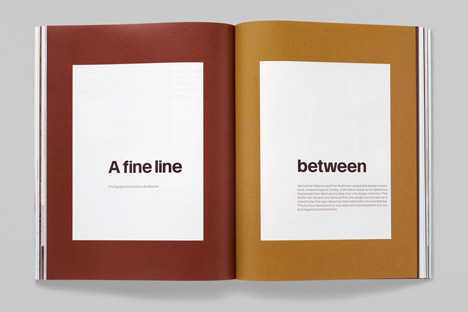
Marcus Fairs: So who is the audience for this magazine?
Laura Houseley: Anybody with an interest in design but equally I hope that is appeals to people in other creative industries too. The idea is that we're representing the subject in a quite beautiful and engaging way and I hope that the magazine is a pleasure to read for people who don't necessarily work in the design industry.
Marcus Fairs: And is this a sort of hobby project or is it a hard-nosed business venture for you?
Laura Houseley: You couldn't do this kind of project if you didn't love doing it and if you didn't love the subject matter, so there’s a personal aspect to it certainly. But professionally, I think that it's a viable business option, otherwise I wouldn't have begun it.
Marcus Fairs: How many copies are you printing and where will people be able to find it?
Laura Houseley: 4,500 in the first print run and it's being distributed by COMAG, so it's got quite a substantial distribution. It's in the places where you'd expect it to be; some design-minded stores and then news stands as well across Europe and in America. It's also being stocked by Monocle, so it'll be in their stores in Hong Kong, Tokyo, New York and London too.
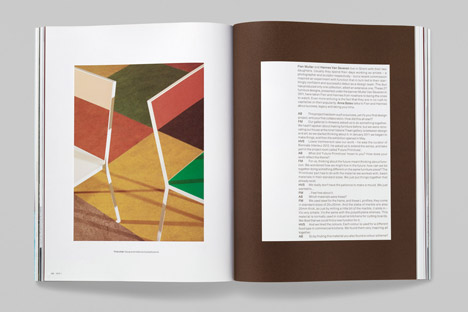
Marcus Fairs: And what's your opinion of how design journalism has changed in the last decade, particularly the influence the internet has had?
Laura Houseley: I don't think design journalism itself has changed at all. The vehicles, the platforms for it have changed. It's as simple as that.
One of the things that inspired me before doing this publication was that I did work for Homme + and Pop and I had a bit of an insight into fashion journalism. I was constantly surprised and delighted by the ways that fashion journalism take a story or a trend and interprets it for the audience and they do that in a myriad of ways. All the different publications have their own character and their own personality. The way they would interpret a story is incredibly creative and I think that hasn't happened in design journalism, which has remained quite straight in the way that it delivers a story. The idea that you can be more creative, you can try and interpret some of these wonderfully creative products and people and brands and things, was interesting to me.
Marcus Fairs: How have you tried to do that in Modern Design Review?
Laura Houseley: We're interested in working with photographers that don't normally shoot design and people who don't perhaps normally write about design. We're also interested in bringing in some of the designers themselves who are very creative. We've got somebody like Daniel Rybakken who presents his own work in such a beautiful way himself, it seems very natural to art direct his own shoot.
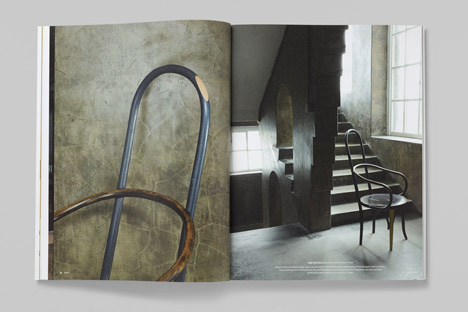
I think the actual design of it is worth noting; it's only two sections. I took out the news section purposefully, quite symbolically because I don't want to chase news stories. People like yourself do that well enough, there's no need for me or a publication of this kind to even entertain the idea that we could compete with that, which I think is also quite refreshing.
There's also lots of bookish traits as well to it. We've got footnotes, we've got little notes in the margin – the idea is that we give the magazine some longevity. It's got to be on the news stand for six months, so I want it to feel like a substantial offering.
Marcus Fairs: So why not publish a book?
Laura Houseley: I'd never considered a book rather than a magazine. I suppose, firstly, making Modern Design Review was about "scratching an itch" for me – I wanted to cover modern design in a way that no one else was commissioning me to. A book simply wouldn't have satisfied that itch. Although books and magazines can be close in character and content, a magazine still has a distinct purpose and nature that a book just doesn't fulfil. A magazine is like an ongoing conversation; it is an evolving, relevant and reactive thing and I really enjoy developing that. That's not to say MDR might not lead to book projects, I very much hope it does.
Marcus Fairs: Do you have a website and how important is that?
Laura Houseley: Yes and it's very important. It's interesting actually how many people ask me about the website before the paper magazine. I wanted to create a paper magazine because it's what I do. It's my craft and so that was my pleasure and I think there are things you can do with a paperly magazine that you can't do online and I enjoy those things. You can be very much in control of what the reader sees and when they see it and how fast they see it and for how long they see it.
But then online does other things very well, and the Modern Design Review website will have film on it predominantly, we will curate original film. But again it will be a tight edit, it will be a leisurely pace.

Marcus Fairs: Do you think there's a resurgence of journalists acting as creative minds in their own right?
Laura Houseley: Yes I think there is a little bit and I think there should be. The design industry itself has become so very creative – designers have become so good at telling their own stories, that it's very easy to repeat what they've done and I think there's definitely space for new ways of interpreting that.
Marcus Fairs: Designers have had to become journalists or rather content producers in order to survive these days. They can't simply send some images and some half-arsed text, they have to present the story, maybe even in their own blog, and become publishers.
Laura Houseley: Yeah, it's become easy for them to do it. They've got the tools now and a lot of them do it very well. Designers work on so many different levels it's very rarely just about making product. They communicate, they are communicators, that's part of what they do, so I hope there's a happy union between design journalists and designers.